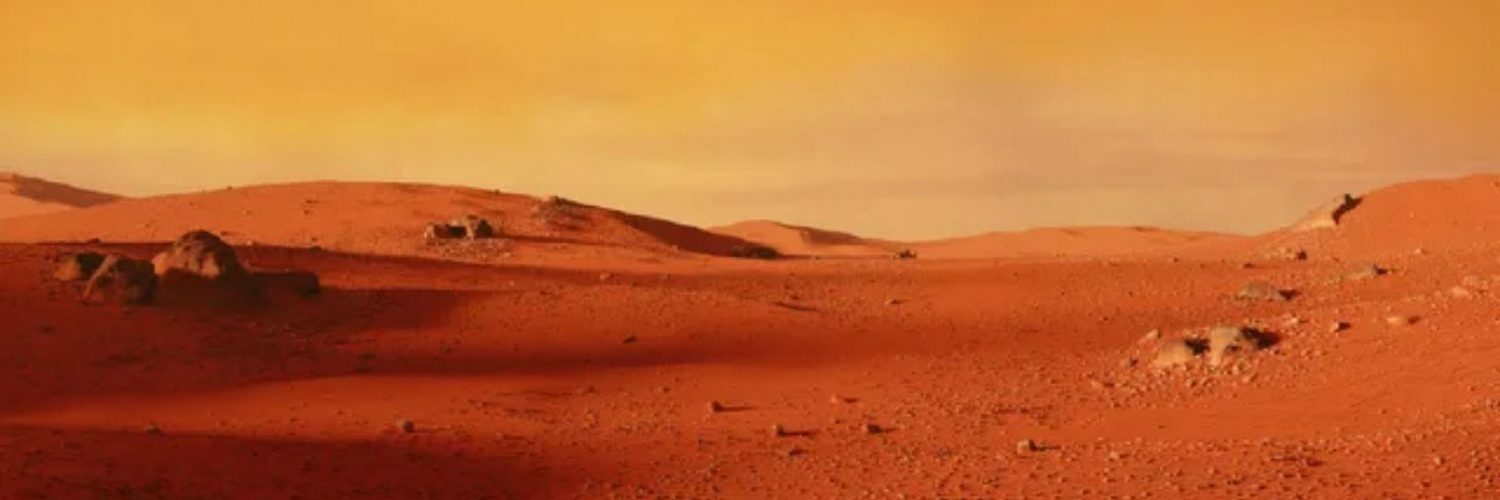TSS EXCLUSIVE: The Colonization of Mars May Not Be A Great Idea After All
by Vittorio Bollo
对许多人来说,火星潜在的殖民化可能性是一个诱人的前景。不断增长的全球人口,不断减少的自然资源,以及气候崩溃的持续威胁,及其有效地刺激着人们不仅想象人类在火星等地定居的未来,而且他们还积极探索和为这些可能性进行投资。
The potential colonization of Mars is a seductive premise for many people. An ever-growing global population, dwindling natural resources, and the constant threat of climate collapse has spurred the great and the good to not only imagine a future for human settlements in places like Mars, but to actively explore and invest in those possibilities.
随着近年来机器人技术、人工智能(AI)和神经网络的加速发展,与火星有关的一切似乎变得越来越像回事。然而,被高度期待也被热烈讨论的殖民火星的想法存在着严重的障碍。本文将探讨三个主要原因,说明殖民这颗红色星球可能终究不是那么可行。
Everything to do with Mars seems increasingly possible with the acceleration of robotics, artificial intelligence (AI), and neural networks in recent years. However, there are serious setbacks to the highly-anticipated, enthusiastically debated idea of colonizing Mars. This article will explore three principal reasons why colonizing the red planet may not be so viable after all.
钱,钱,钱
Money, Money, Money
2015年,NASA发布了一份36页的报告,题为《NASA的火星之旅:开拓空间探索的下一步》,其详细介绍了NASA在火星上定居的计划。该航天局在报告的最后说。”NASA目前对探索能力的投资和今天正在作出的决定对实现我们的共同目标至关重要:将人类的存在扩展到太阳系和火星表面。” 引人注目的是,美国宇航局的报告没有包括任何哪怕是粗略的分类,即这三个阶段的 “火星之旅 “将实际花费多少。
In 2015, NASA released a 36-page report titled NASA’s Journey to Mars: Pioneering Next Steps in Space Exploration that detailed its plan for a settlement on Mars. The agency concluded the report with: “NASA’s current investments in exploration capabilities and the decisions being made today are crucial to achieving our common goal: extending human presence into the solar system and to the surface of Mars.” Tellingly, what the NASA report failed to include was an even cursory breakdown of what this three-phased ‘journey to Mars’ would actually cost.
埃隆·马斯克,SpaceX公司的创始人和首席执行官,是2020年代亿万富翁阶层中的火星移民任务的主要支持者。马斯克认为,在火星上建立人类定居点(”城市”)不仅是可能的,而且也将是人类有史以来最大的一个建筑项目。而估计的成本呢?即使是马斯克也没有一个合理的想法,他于2019年8月在推特上直言不讳地表示,他的火星定居点的价格可能从1000亿美元到10万亿美元不等,这肯定是人类历史上使用过的跨度最大的成本估计。
Elon Musk, founder and CEO of SpaceX, is the leading champion of a mission to populate Mars among the billionaire class of the 2020s. Musk believes that a human settlement (‘city’) on Mars is not only be possible but will also be the single-biggest construction project ever undertaken by humans. And the estimated cost? Even Musk doesn’t have a sound idea, bluntly stating on Twitter in August 2019 that the price tag on his Martian settlement could be anything from $100-billion to $10-trillion, surely the widest cost variation ever quoted in human history.
靴子(不)是造来支持行走的
These Boots Were (Not) Made For Walking
火星对人类的身体并不友好。火星上的重力大大低于地球上的重力,这意味着人体在火星土壤上几乎立即变得虚弱。加州大学旧金山分校(UCSF)的一项研究直截了当地指出:前往火星将对我们的身体——从心血管系统到骨骼——造成破坏。该大学的放射学和生物医学影像学教授托马斯·兰说:”人们认为技术是太空飞行的限制因素,但事实并非如此。人类的生理学才是限制因素。”
Mars is not kind to the human body. Gravity on Mars is substantially lower than that on Earth, which means the human body almost immediately becomes weaker on Martian soil. A study by the University of California San Francisco (UCSF) put it bluntly: traveling to Mars will wreak havoc on our bodies, from our cardiovascular system to our bones. Thomas Lang, a professor of radiology and biomedical imaging at the university stated how, “People think of technology as the limiting factor in space flight, but it’s not. Human physiology is the limiting factor.”
此外,火星上的辐射污染是一个非常真实的威胁,因为这个星球没有保护性的臭氧层。这意味着来自太阳的紫外线辐射将毫无阻碍地打在这个星球上,而且强度极大。这些紫外线辐射还影响到火星土壤的质量,美国宇航局自己也承认这是一个关于火星栖息地的限制性因素。
Furthermore, radiation poisoning on Mars is a very real threat, since the planet has no protective ozone layer. That means UV radiation from the Sun beats down on the planet, unhindered and immensely stronger. These UV blasts also impact the quality of Martian soil, which NASA itself recognized as being a limiting factor regarding a Martian habitat.
地球化?建议三思
Terraformation? Think Again
火星 “地球化 “的概念——就是让火星变得更 “像地球”从而更适合人类居住——已经变得没有意义。研究人员罗伯特·祖布林和克里斯·麦凯在1993年写了一篇开创性的论文,文中提及支持火星地球化的一些可能性。一个解决方案中提到在太空中的巨大轨道镜,并将阳光反射到星球上,从而提高其温度。也许最广为传播的想法是将该星球上的冰冻水气化并散到大气中,使该星球的大气和云层变暖。
The notion of the ‘terraformation’ of Mars, by which Mars is made more ‘Earth-like,’ and thus more hospitable for humans, has been made moot. Researchers Robert Zubrin and Chris McKay wrote a seminal paper in 1993 espousing some possibilities for terraforming Mars. One solution included giant orbital mirrors in space that would reflect sunlight onto the planet, thereby raising its temperature. Perhaps the most touted idea was to melt the frozen water on the planet into the atmosphere, allowing for the warming of the planet’s atmosphere and cloud formations.
到2018年,NASA承认,目前的技术无法使火星的地球化成为可能。这包括经常被人们提及的通过融化火星上的冰将二氧化碳释放到火星大气中的概念。据NASA赞助的研究的主要作者,美国科罗拉多大学博尔德分校的布鲁斯·贾科斯基说,该研究出现在《自然天文学》杂志上,结果表明,如果有可能将气体释放到大气中,火星上将不会有足够的二氧化碳残留来提供温室效应。此外,根据贾科斯基的说法,火星上的大部分二氧化碳气体是难以取用的。因此,仅凭当代技术将不可能对火星进行地球化。
By 2018, NASA acknowledged that current technology wouldn’t make terraformation possible on Mars. That included the oft-touted concept of releasing CO2 into the Martian atmosphere by melting the ice on the planet. According to Bruce Jakosky of the University of Colorado in Boulder, the lead author of the NASA-sponsored study that appeared in the journal, Nature Astronomy, the results suggested that there is not enough CO2 remaining on Mars to provide significant greenhouse warming were it possible to release the gas into the atmosphere. Furthermore, according to Jakosky, most of the CO2 gas on Mars is inaccessible. Therefore, the terraformation of Mars could not be possible with contemporary technology.
在火星上建立一个可行的永久性殖民地的梦想可能仍然只是一个白日梦。花费数十亿甚至数万亿美元将一小部分人类送到一个明显对人类不友好的星球上生活,许多人都可能会认为这个想法在财政上站不住脚,甚至是近乎不道德的。
The dream of a viable, permanent colony on Mars may yet remain just that – a dream. Spending billions and even trillions of dollars to send a tiny percentage of humans to live on a frankly hostile planet could be considered financially indefensible and even borderline unethical by many people.
有理由认为,对于这些生活在生物圈退化、社会经济和其他问题众多的星球上的人来说,火星的殖民化根本不是一个优先事项。花费巨资将少数富人或”幸运儿”送到附近的星球的想法可能会变得奇怪的过时。重点也许应该更多地放在保护我们在这里拥有的东西上。
It could be justifiably argued that the colonization of Mars is simply not a priority for those living on a planet with a degraded biosphere and a multitude of socio-economic and other problems. The idea of spending fortunes to send just a rich or ‘lucky’ few to a nearby planet may become oddly archaic. The focus should probably remain on preserving what we have right here.











